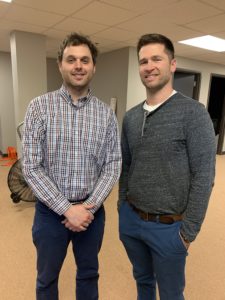
The month of March is designated as Athletic Training month. JET Physical Therapy physical therapist Chuck Miller works to keep local athletes ready for competition in southeast Iowa. Miller, a Hillcrest Academy graduate, works with Raven athletes and others throughout the area. To help student athletes reach their goals and compete, Miller spends time with the team and coaches including visiting schools for one practice a week, meeting with athletes before and after practice for screenings if needed. From those screenings he can help to diagnose any issues and recommend exercises, support braces, taping regiments or that they schedule an appointment with a physician or orthopedist.
The work of those at JET Physical Therapy goes beyond just a once a week visit however. If you attend a Hillcrest sporting event, or a competition for any other school they are contracted with in the area, you will see the friendly face of a JET physical therapist on the sideline, ready to act if injuries happen during the game. They also meet with coaches to help plan warm-ups and to keep an open line of communication about injured athletes progress through rehabilitation, a possible safe return date to action and any restrictions they may need in place to stay healthy.
At JET Physical Therapy, as you have likely heard during the KCII Athlete of the Week segments, their motto is “movement is your medicine”. Miller describes how he and other JET employees put this mantra into motion. “Eric Turner, our owner, coined that phrase I think, close to when I started working at JET. It’s an important reminder that sometimes we can rely on more passive things. If someone is taking medication, or resting, or removing themselves from the situation, that isn’t as effective always as moving and taking an active role in the recovery process. We encourage people to be more active, within their limits. Some sort of movement to help them reach their goals. Movement can be medicine.”
While right now may be atypical due to the COVID-19 pandemic, Miller suggests that student athletes find a routine to stay active so they aren’t starting from square one when activities do resume, and to watch for overuse injuries once competition starts.

